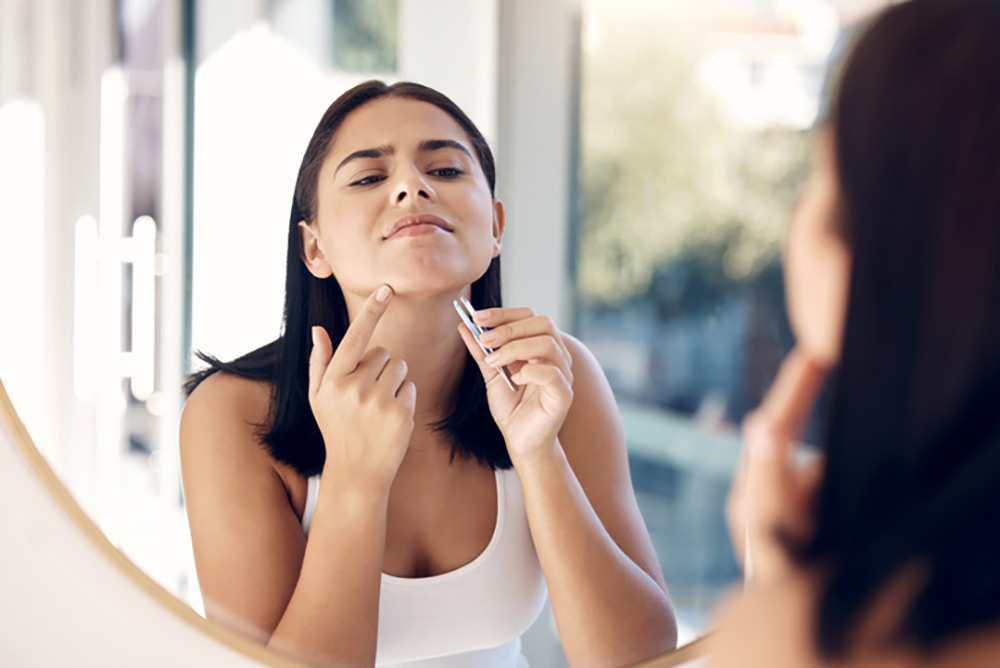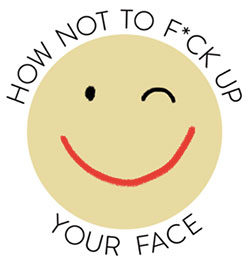By Valerie Monroe
If you’re interested in feeling happier about your appearance—especially as you age—you might like reading what she has to say about it. For more of her philosophical and practical advice, subscribe for free to How Not to F*ck Up Your Face at valeriemonroe.substack.com.
YOU’VE PROBABLY noticed that the rich and famous seem to (or claim to) have access to skincare products, treatments, and secret sauces—or magical green juices—largely unavailable to us because of price or accessibility; this is one way beauty and wellness marketers tickle our yearning, keeping us hooked on the search for something better. Back in May, when I looked at that photo of Martha Stewart on one of the covers of the Sports Illustrated swimsuit issue, I wondered: Does the woman want us thinking she’s figured out a way to cheat death? That we’re approaching an era when only poor people, or the un-rich, actually die? (As opposed to die sooner, an era in which we unfortunately already live.) To me, that photo is a very red, juicy, poison apple.
For a point-by-point tutorial about why this particular kind of misrepresentation can be harmful, read Jessica DeFino’s thoughts about it in The Unpublishable.
I read something recently about mass psychogenic illness—when a group of people start feeling sick with similar symptoms at the same time without evidence of any physical or environmental cause—which made me think about the way our beauty culture affects so many of us, especially with the ubiquity of social media (and certain magazine covers).
If we think of our symptoms as unhappiness, as yearning for an unreasonable and unachievable ideal, as the urge to physically modify our bodies in the the name of “improvement,” as a compulsion to constantly scan our face for flaws and signs of aging, might we be suffering from a kind of mass psychogenic illness? You could say there is an environmental cause—a destructive beauty culture amplified by the media—but I think we’ve internalized it to such a degree that it feels contagious. As if we “catch” it from one another. If you’re interested in reading more about this contagion, psychologist Renee Engeln writes extensively about the damage beauty culture inflicts in her book, Beauty Sick.
◊◊◊◊◊◊◊◊◊◊◊◊
Now, two questions about beauty-related issues that keep popping up in reader mail.
Q: I have stubborn stubble on my upper lip and chin. I’ve tried laser treatment, electrolysis, and other methods to no avail. I currently wax and I’m tired of it. Any advice?
A: Though I’ve previously written about facial hair in this post and this one, your question brings up a few ideas I didn’t fully cover. Dermatologist Jessica Weiser adds several helpful suggestions, starting with some pointed questions.
“The first question to ask is what kind of laser was used and on what settings to determine if the treatment was adequate for your skin and hair type,” she said. (I suspect you don’t have the answers to those questions.) “Also, how many electrolysis sessions did you have? Did all of the hair grow back or only some? Do you have any other symptoms? Thinning hair on the scalp? Irregular hair growth anywhere else on your body?”
You can see where Weiser is going with this. It’s time to look at the bigger picture.
“I always counsel my patients that lasers and electrolysis reduce hair growth significantly but do not permanently remove all hair,” said Weiser. These treatments require maintenance—usually once every 6-12 months to maintain treatment outcomes, especially in hormonally influenced areas of the body (the upper lip, chin, and jaw).
If your facial hair growth persists despite appropriate treatments, you may have a genetic or hormonal underlying cause, said Weiser, which requires a medical work-up with blood tests and sometimes a gynecological evaluation to determine if there is an excess of androgens (male-type hormones) triggering the growth. In Weiser’s practice, many of these patients start taking medications like spironolactone to regulate their hormones and consequently find hair reduction much more successful.
The best news: Once hormones are optimized, restarting hair-reduction procedures can be done more effectively, she said. Additionally, the use of Vaniqa cream along with laser or electrolysis can further augment cosmetic results. Vaniqa contains the active ingredient eflornithine, which inhibits the activity of an enzyme present in hair follicles, slowing hair development.
Obviously, though there are many options for reducing your stubborn stubble, it might take some detective work before you find the right tools.
☀️ ☀️ ☀️
I’ve written about sunscreen here, but one reader had an interesting follow-up.
Q: Now that we’ve all become BFFs with our SPFs, I’m wondering: Are there things we can do to boost our sun protection and make sunscreen work harder? An aesthetician recently recommended that I apply tranexamic acid lotion under my daily sunscreen. She also wants me to add a vitamin C serum to my skincare regimen. And a dermatologist recommended oral Heliocare supplements with polypodium leucotomos extract. Again, these were to be used in addition to wearing strong SPF, a hat, rash guard/sleeves, etc.—not as replacements. Do they really make sunscreen work better, or are they a waste of money?
A: Honestly, if I’d received all that advice, I’d wonder if it’s worth leaving the house. In other words, overkill.
But I’m no doctor, so I asked our ever-reliable DermDiva, Heidi Waldorf, for her response.
“As a second-generation dermatologist for whom the greatest sin of my teens was coming home with a tan (let alone a burn!), I can tell you that you can protect yourself with almost any sunscreen if properly applied,” she said. In the 1970s, when Waldorf grew up, the highest SPF you could find was 15. (She confesses her wildest, most reckless days were when she used an SPF 8.) “Despite the low SPF, the sunscreen worked fine as long as I applied and reapplied enough,” she said. And I can personally tell you it seemed to work, because Waldorf’s skin looks completely unblemished from sun damage.
The reason dermatologists recommend at least an SPF 30 broad-spectrum sunscreen (which means it offers both UVA and UVB protection) is that most people apply too little too infrequently. Which is why Waldorf suggests applying it twice before leaving home. If you apply what you can easily fully rub in and then do it again, the coverage and feel will be better than if you attempt to apply the whole amount—around a nickel-sized dot for your face—all at once, she said.
As for topical and oral antioxidants like vitamin C, tranexamic acid, and polypodium: They aren’t necessary. It’s true, though, that they may be helpful adjuncts to reducing damage caused by any ultraviolet radiation that gets through sunscreen, which is why oral polypodium (what’s in Heliocare) and topical antioxidants (or sunscreens containing them) may be recommended for people at highest risk (those with outdoor jobs, a history of skin cancer, sun-sensitive conditions like polymorphous light eruption, or melasma). Waldorf notes that topical tranexamic acid is more commonly used to treat hyperpigmentation rather than for protection.
Always an excellent student, she looks to the Australian schoolkid mantra* about sun protection:
- Slip (on a shirt)
- Slap (on a hat)
- Slop (on the sunscreen)
- She adds, unalliteratively: Avoid (midday exposure).
* A reader has since pointed out that the Australian schoolkid mantra is actually Slip, Slop, Slap.


